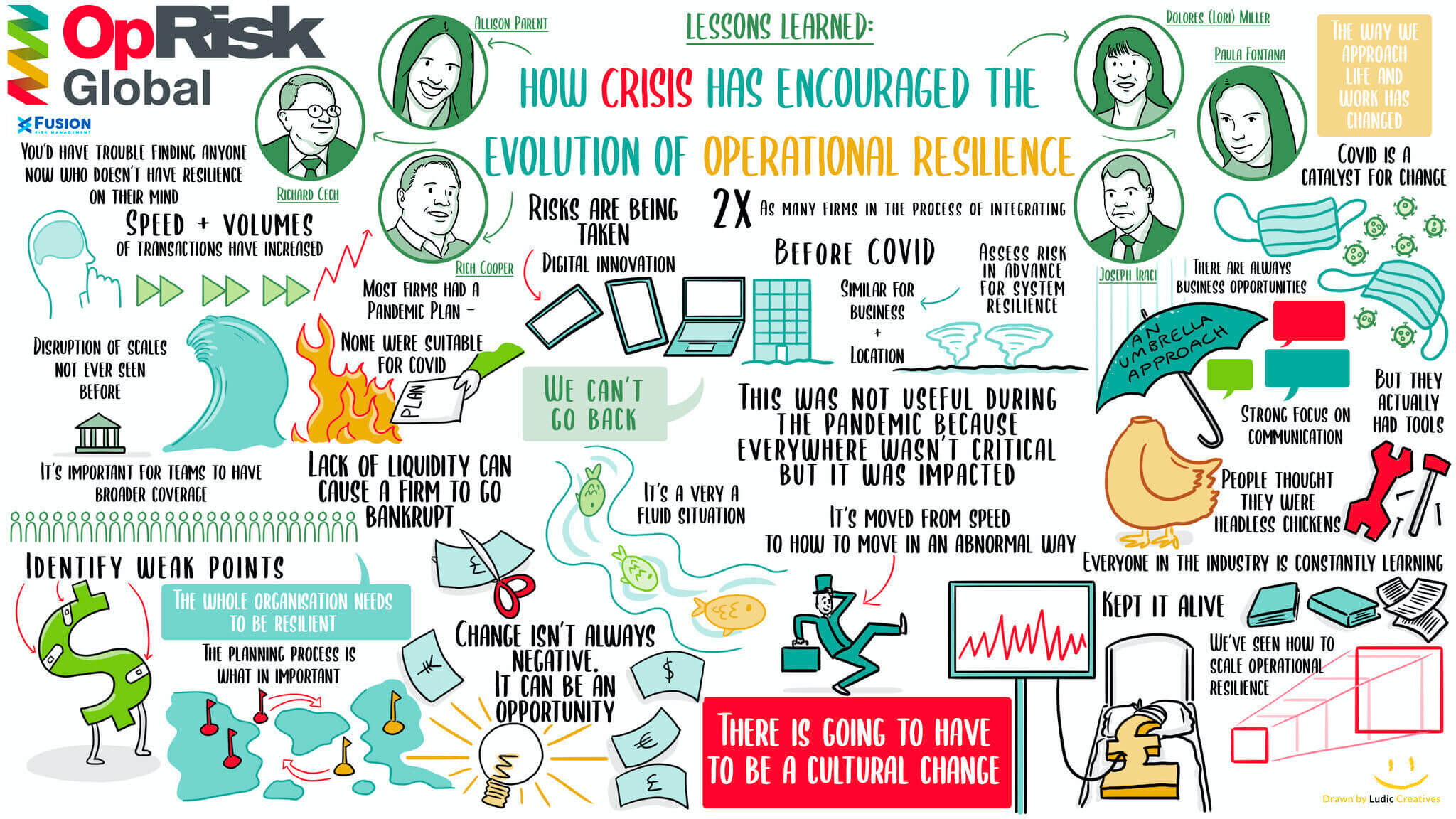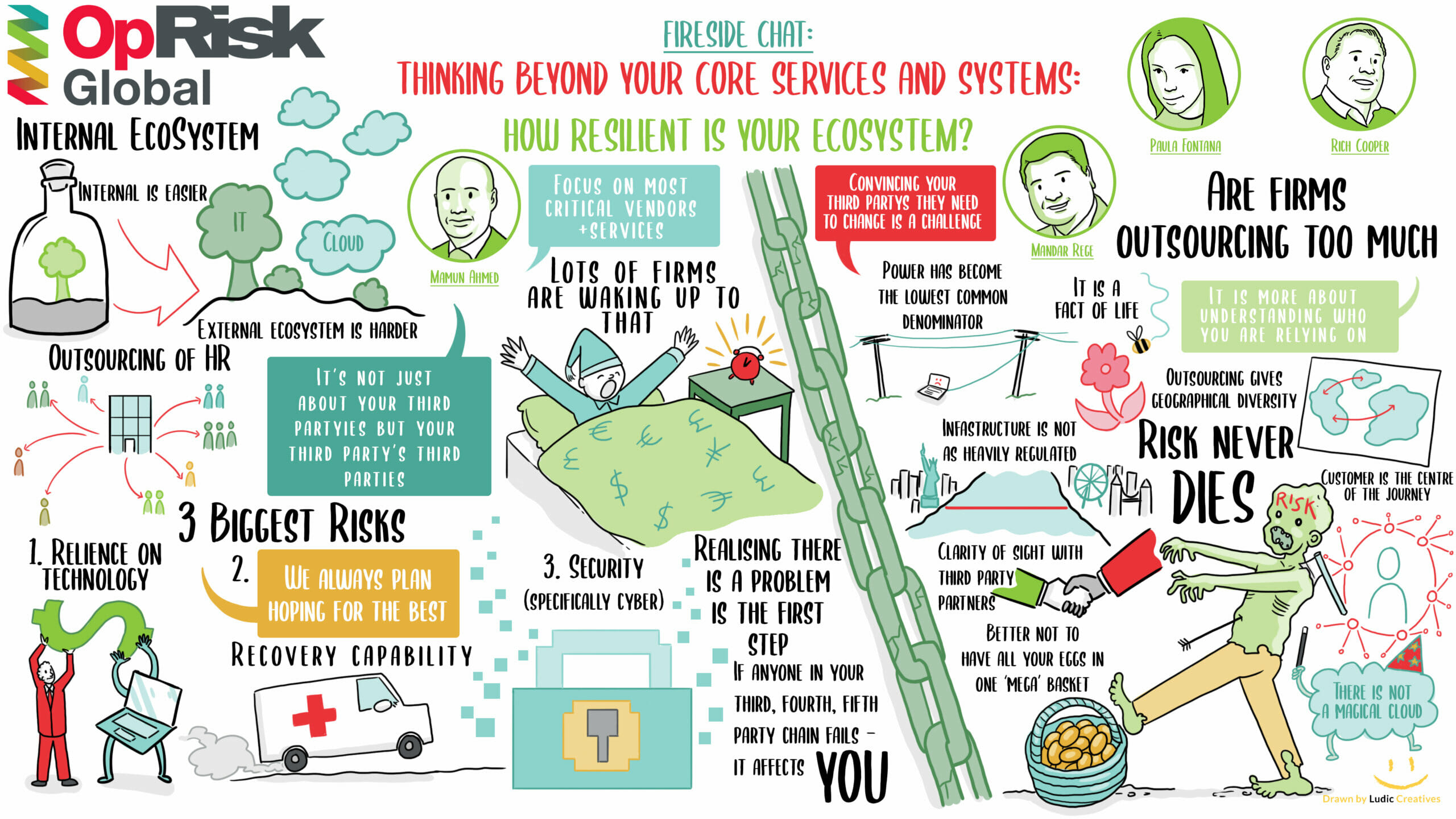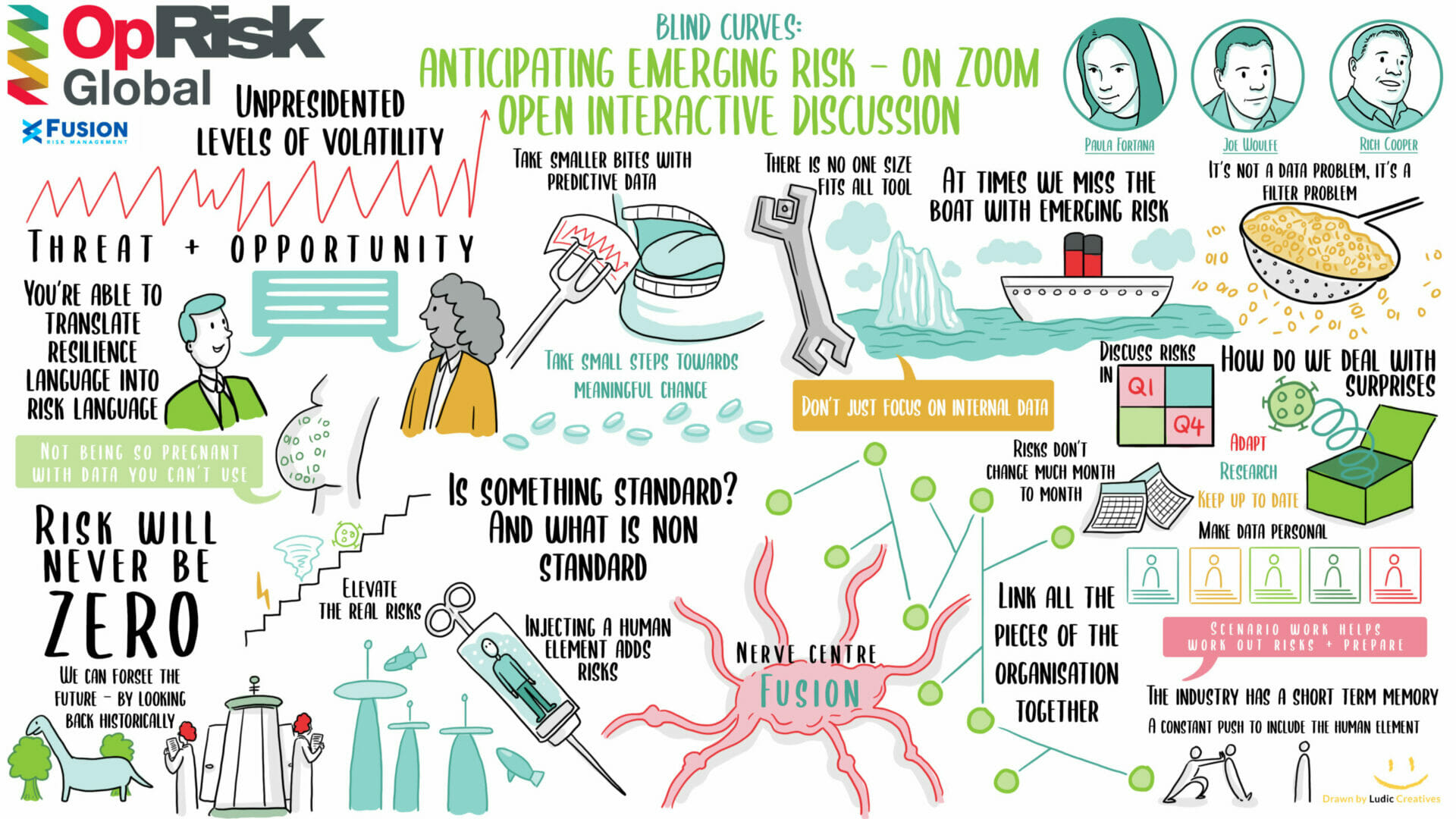9 Takeaways from OpRisk Global on Achieving Operational Resilience in Financial Services
Author: Chloe Swierzbinski
Anticipate. Prepare. Respond. Learn.
COVID-19 showed that even the best-laid plans could only get you so far. In today’s world, firms are not facing one singular event but rather a series of scenarios happening simultaneously. The pandemic pushed operational resilience into the spotlight. In the face of disruption, the companies that were best prepared had a flexible, agile approach and a good understanding of capabilities and vulnerabilities. When everything is impacted but not everything is critical, how can you operate in a non-normal fashion with controls in place? The key to operational resilience is understanding the business end-to-end and identifying critical services through the lens of the customer. To learn more about getting started with operational resilience, check out our 10 step guide.
In March, Fusion attended, sponsored, and participated in OpRisk Global 2021, a virtual discussion hosted by Risk.net dedicated to helping financial services achieve operational resilience and share insights.
9 Takeaways from OpRisk Global 2021
While the sessions spanned many topics, from defining operational resilience to discussing new challenges for third-party management, we’ve compiled nine common themes and takeaways:
1. Resiliency is good for business.
Define what resilience means for your firm and identify what’s important. Become resilient because you want to be resilient, not just to meet regulatory requirements.
2. Embed resilience into the DNA of your organization.
Resiliency needs to be at the forefront of your business, flow through all units, and be brought in for strategic decisions – from product design to supplier selection. It requires a culture shift, from compartmentalizing resiliency to implementing a centralized approach, that proactively looks through the lens of customers to identify critical services and evaluate dependencies and impacts.
3. Understand your business end-to-end by bringing siloed business units together.
Look horizontally to understand how business units and processes connect and work together to deliver on services.
4. There are knowns, unknowns, and unknown unknowns. Focus on what you can know: business processes and how they work.
We are no longer facing singular scenarios but rather multiple, simultaneous events. Avoid over-planning and overcomplication by establishing a flexible program by understanding the business and critical services.
5. Layer scenarios to ensure you can respond.
Scenario testing is a valuable exercise to examine how risks materialize, explore the unthinkable, refine the script, and better prepare for the future. Understand how well you can rely on critical third-party vendors by performing scenario analysis with them to flesh out unclear requirements or assumption failures.
6. Building an ecosystem is the future.
Third parties are essential to building a resilient organization. Collaborating with them as if they were an internal, functional team and encouraging them to map their own ecosystem of dependencies and risks will yield a more resilient operation.
7. Continuously monitor engagements with third parties.
A vendor could fluctuate in criticality from project to project and over time as things may shift. Gaining a view across the organization and engaging in vendor risk management by evaluating vendors is essential in continuously understanding how they fit in with the business.
8. Leverage historical data to predict future outcomes.
Build leading indicators based on historical data, analyze trends, and identify areas needed for resiliency.
9. Data, metrics, and reporting are essential.
Communicate data-backed insights in language that leadership understands to demonstrate the value of resiliency and gain buy-in. Harness information from other systems and engage business units across the organization for an end-to-end view. Track every event and rate it to provide data points for continuous improvements to processes and programs and show effectiveness in resiliency and mitigation.
OpRisk Global x Fusion – Lessons learned: how crisis has encouraged the evolution of operational resilience

Panelists explored how the pandemic illustrated the importance of having a flexible, agile approach to resilience. Firms learned how to operate in a non-normal environment where everything is impacted, but not everything is critical.
OpRisk Global x Fusion – Fireside chat: Thinking beyond your core services and systems: How resilient is your ecosystem?
Understanding your ecosystem and where dependencies lie is key to managing risk. There are many things to consider when it comes to third-party risk management, and firms need to think about the broader ecosystem of risks and dependencies: your third parties’ third parties, public policy and central banks, and critical financial market infrastructure.

OpRisk Global x Fusion – Roundtable – Blind curves: anticipating emerging risk
Firms are looking to the future for potential problems that may arise and proactively addressing areas that need resiliency. Part of how they’re able to do this is by collecting, analyzing, and using data to understand trends, amass leading indicators, communicate insights, and make strategic decisions.

About the Author
Chloe Swierzbinski is a Senior Product Marketing Manager at Fusion Risk Management. Coming to Fusion having worked at financial technology companies serving some of the largest institutions in the world, Chloe is diving into the world of risk and resiliency to understand market trends, customer needs, and strategically help bring impactful products to market.



